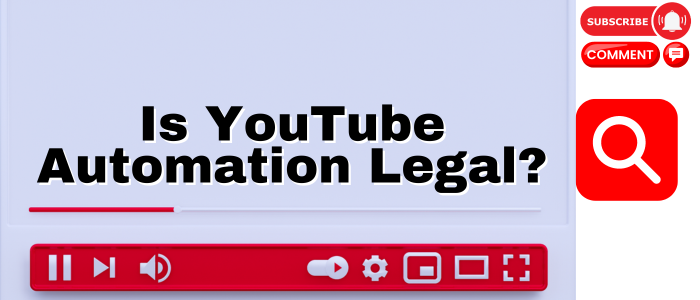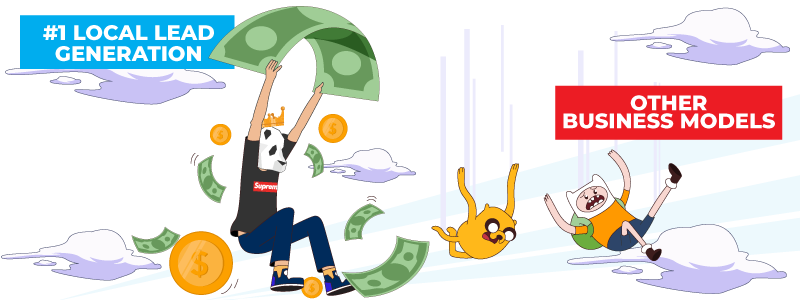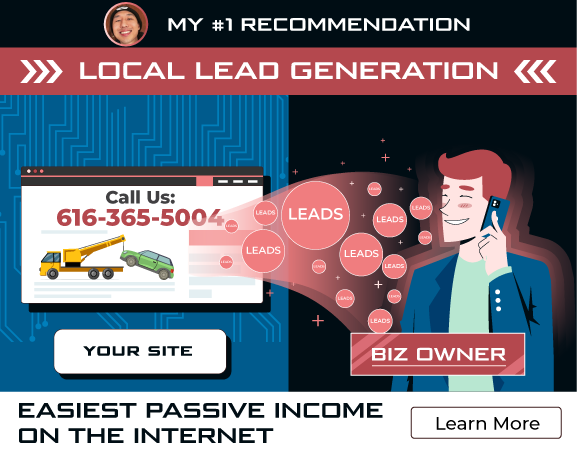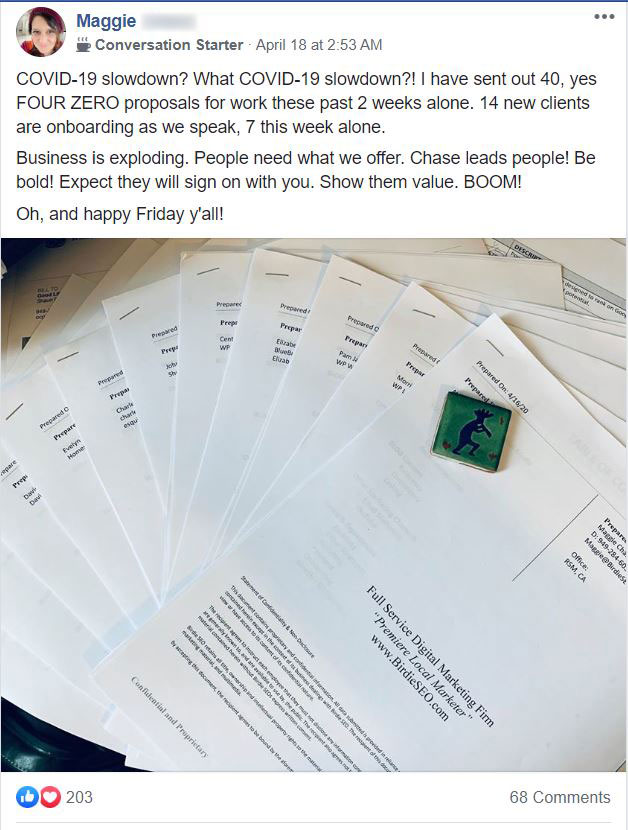
Yes, YouTube automation is legal. However, it's important to follow YouTube automation policies while operating your automated channel. Policies such as the Impersonation Policy, Fake Engagement Policy, and Spam, Deceptive Practices, & Scams Policies should be followed when employing YouTube automation. If you fail to comply with these policies, your YouTube automation channel receives a strike initially and potentially be banned or terminated.
YouTube Automation offers a unique opportunity for consistent income by tapping into the YouTube platform's popularity as the second-largest global search engine. According to YouTube, they have billions of hours of daily video consumption that can generate significant views that lead to huge earnings. However, success on YouTube automation requires ongoing team management and trend monitoring. Also, be mindful that you are not only competing with automated YouTube channels on the platform, but you are competing with 4.4% of 2.6 billion active YouTubers who run their own channel.
In this article, we reveal the three major YouTube automation policies you need to avoid. We'll provide you with some examples of each policy and explain what could happen if you fail to comply with them. Also, this article will show different ways to make money with YouTube automation without making any videos. In the end, we'll introduce you to another way of doing business that might be even better than running YouTube automation channels.
What Is YouTube Automation?
YouTube automation is a method where you delegate the tasks of operating a YouTube channel to freelancers. This covers tasks like video editing, making thumbnails, managing the channel, writing scripts, and providing voiceovers. This approach lets you collaborate with a team and use stock images or videos without showing your own face in the videos. It can also involve tools to automate repetitive tasks, such as uploading videos, engaging with the audience, and editing videos using stock materials. Noteworthy tools in this field include TubeBuddy for enhancing video management, Canva for creating graphics, and InVideo for video creation.
What Is The YouTube Automation Policy?
The YouTube Automation Policy outlines regulations for content creators who employ automation tools to generate and distribute videos on the platform. Its primary purpose is to ensure that automated content aligns with YouTube's quality standards and community guidelines. This policy prevents the proliferation of low-quality or spammy videos while promoting original and engaging content. It mandates that creators using automation maintain an active role in supervising and curating their channels, safeguarding the platform's integrity and user experience.
3 YouTube Automation Policies to Avoid Account Suspension
1. Impersonation Policy
An impersonation policy on YouTube prevents content that pretends to be someone else or a specific channel. This includes copying the appearance of another channel to create confusion about who is behind it. Personal impersonation involves posting content as if you were another person. YouTube also upholds trademark rights to avoid confusion about advertised goods and services. If a channel or its content imitates another channel to the point of creating a misleading resemblance, it may not be allowed.
Examples of impersonation on YouTube include:
What happens if you violate the Impersonation Policy?
Violating this policy could lead to the termination of your channel or account.
2. Fake Engagement Policy
The Fake Engagement Policy on YouTube prohibits activities that artificially boost metrics, like views, likes, and comments through automatic systems or deceptive tactics. Additionally, creating content solely to reward viewers for engagement is not allowed.
Examples of Fake Engagement on YouTube include:
What happens if you violate the Fake Engagement Policy?
Violating the Fake Engagement Policy can cause content removal, channel termination, or strikes against your channel. Your content may be taken down, and you'll be notified via email. Unsafe links may also be removed.
A first-time offense may lead to a warning, while subsequent violations could cause strikes. Accumulating 3 strikes within 90 days will lead to channel termination.
3. Spam, Deceptive Practices, & Scams Policies
YouTube prohibits spam, scams, and deceptive practices that exploit the community. This includes content designed to deceive users into leaving YouTube for another website.
Examples of Spam, Deceptive Practices, & Scams on YouTube include:
- False Celebrity Association: Displaying a thumbnail featuring a well-known celebrity that has no relevance to the actual content of the video.
- Deceptive Content Presentation: Using titles, thumbnails, or descriptions that mislead viewers about the actual nature or purpose of the content. For instance, employing misleading elements when there's a significant risk of causing serious real-world harm.
- Exaggerated Promises: Videos making unrealistic claims, such as assuring viewers of rapid wealth accumulation or endorsing miracle treatments for serious illnesses like cancer.
- Pyramid Schemes: Content advocating cash gifting or pyramid schemes where participants are encouraged to send money without receiving a tangible product or service.
- Dedicated Scam Accounts: Accounts solely dedicated to promoting cash gifting and pyramid schemes.
- False Promises of Quick Money: Videos that entice viewers with misleading statements like, "You'll earn $50,000 tomorrow using this method!"
What happens if you violate the Spam, Deceptive Practices, & Scams Policies??
Violating these policies could cause the suspension of your monetization or the termination of your channel or account.
How Does YouTube Automation Work?
YouTube automation works through two key methods: outsourcing tasks and using automation tools. You can hire freelancers from platforms like Upwork or Fiverr to handle specific jobs for your YouTube channel. These tasks might include video editing, creating thumbnails, finding keywords, scheduling content, and engaging with your audience. Freelancers are skilled individuals who take care of these tasks according to your instructions, making your channel management more efficient and professional.
Automation tools such as TubeBuddy and VidIQ offer valuable features to boost your YouTube presence. These tools analyze data and suggest improvements. TubeBuddy helps you by recommending keywords to enhance your video's visibility and provides real-time statistics. VidIQ helps spot trending topics, study competitors, and refine your video's SEO. There are different ways to use AI for YouTube automation that allow you save tons of time while optimizing your videos effectively.
How To Start YouTube Automation?
To start YouTube automation, you need to first select a profitable niche. You can consider trends and your expertise. Then, you create a branded YouTube account. Add all key details to give your channel a professional and cohesive identity. After creating your account, you need to delegate tasks to freelancers from platforms like Upwork. Also, you can use automation tools like TubeBuddy for streamlined workflow. To officially start a YouTube automation business, you need to aim for monetization by meeting YouTube's requirements.
What Is YouTube Automation Without Making Videos?
Faceless podcasts, compiled automated videos, and gaming channels are YouTube automation without making videos.
You can try to start a faceless podcast. People enjoy listening while doing other things. So, starting a podcast is simpler than video-making. Podcasts earn money through ads via the YouTube Partner Program (YPP). Also, some make money from sponsorships. As your podcast grows, you might get a few offers from your niche. You can check The Samplecast as an example.
Another way to make money on YouTube automation is to compile automated videos. These mix short clips from different creators in the same niche. Some channels do this, like Daily Dose of Laughter and Bright Side. This way is the easiest you can try without traditional video-making.
Another idea is a gaming channel. Gaming is big on YouTube. You don't need your own videos or share others' gaming clips. You can share your gaming clips, strategy, and highlights with your viewers. These channels make money through ads on the YouTube Partner Program. Some popular channels in this niche include VanossGaming and DanTDM. If you want to learn how to make $10,000 per month on YouTube without making videos, check this article.
Here are other ways to make money on YouTube automation without making videos:
What Are YouTube Automation Examples?
You can hire a freelancer to handle video editing tasks. They can edit raw footage, add graphics, transitions, and captions, ensuring a polished final product.
You can use automation tools like Buffer or Hootsuite that allow you to schedule when your videos will be published. This ensures a consistent posting schedule without manual intervention.
Try using tools like TubeBuddy or VidIQ to automate keyword research and optimization. These tools suggest relevant keywords to improve your video's search visibility.
After uploading a video, you can use tools like Zapier to automatically share your video on various social media platforms. It expands your reach without manual sharing.
Automation tools can help filter and manage comments on your videos, saving time by sorting through spam and highlighting meaningful interactions.
You can utilize tools like YouTube's own Playlist feature that can help you automate the organization of your videos into relevant playlists. It enhances viewer engagement and navigation.
Is YouTube Automation Worth It?
Yes, YouTube automation is worth it. With 2.7 billion active users in 2023, it's hugely popular, ranking just after Google and Facebook. The ad revenue is expected to reach $30.4 billion, and growth might speed up to 10.3% in 2024. However, there are challenges: YouTube's ad revenue fell 2.6% in 2023 because of economic uncertainty, and it's the third quarter in a row with a decrease. Beginners should weigh these fluctuations before diving into YouTube automation.
Is YouTube Automation Legit?
Yes, YouTube automation is legit. This business model has shown success for numerous automated YouTube channels that allow them to earn a steady income. However, some entrepreneur claims that YouTube automation is legit and can be a scam business model. Also, achieving huge results requires hard work as you'll need to strive to achieve millions of subscribers and views. It's also important to be wary of potential scams related to YouTube automation courses that promise quick wealth. YouTube automation isn't a get-rich-quick scheme. According to Remote Working Warriors, the average time to reach 1,000 subscribers on YouTube is around 15.5 months with 164 videos.
Is YouTube Automation Real?
Yes, YouTube automation is real. You can really make money from YouTube automation if you have a perfect niche and share interesting content. If you have a team that can keep making videos people like, you might do really well. But, remember, it takes time to build a successful channel. Some automated YouTube channels are successful, like Bright Side. It talks about cool things like facts, life tips, and mysteries. Bright Side has 44.5 million subscribers and over 6,000 videos. It makes around $113.1K to $1.8M every year.
Other YouTube channels that use automation and do well are:
Is YouTube Automation Easy?
No, YouTube automation is not easy as it seems. As of July 29, 2022, there are 113.9 million YouTube channels, but only 32,300 have reached 1 million or more subscribers. This shows that managing a YouTube channel, including automation, is challenging. Additionally, you're up against 4.4% of the 2.6 billion active YouTube users who have their own channels. While some YouTube automation experts might claim it's easy, the reality is quite different.
YouTube Automation Related Articles
Conclusion: Is YouTube Automation The Fastest Way To Quit Your 9-5 Job?
No, YouTube automation is not the fastest way to quit your 9-5 job. Stash Vine’s research reveals that it takes time to have subscribers on YouTube. On average, it takes about 85.5 days to get 100 subscribers and a minimum of 12 months for 1,000 subscribers. Also, it shows that you need an average of 5 years for 10,000 subscribers and you need 129.7 views for just 1 new subscriber. So, using YouTube automation to quit your job requires significant time to gather enough subscribers and views for a steady income.
Also, here are some drawbacks of YouTube automation:

If you want a business model that allows you to leave your job faster than YouTube automation, consider local lead generation. Here's how it works: you create websites and rank them on search engines like Google. Once they rank well, you can rent them out to local businesses that generate a monthly passive income. Also, you can scale as much as you'd like — just build, rank, rent, and then repeat the process. Local lead generation offers a profit margin of around 80% to 90%, and you'll only be competing with 20-30 companies or fewer rather than trying to stand out among millions of YouTubers.
I personally started using the local lead generation method in 2016, and by the end of 2017, I was making over $25,000 per month in residual income. If you're curious about how I quit my 9-5 job and achieve financial freedom, you can check my local lead gen training.



